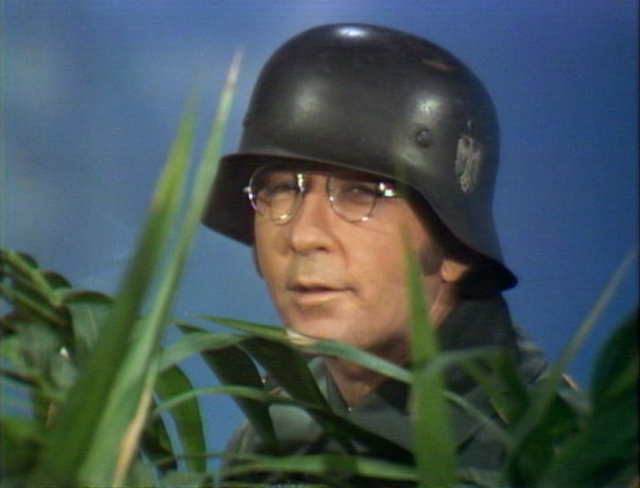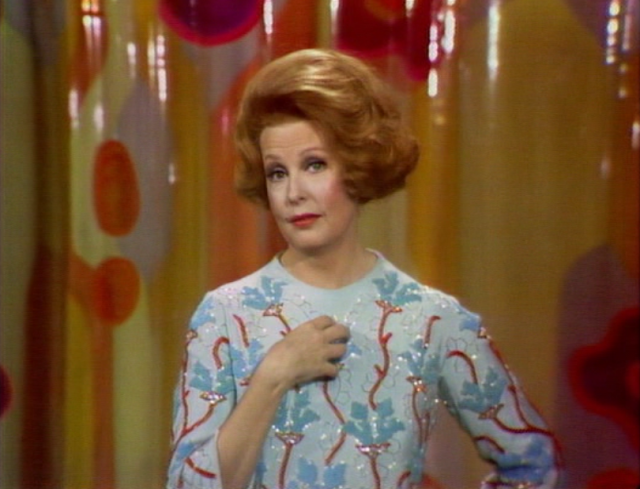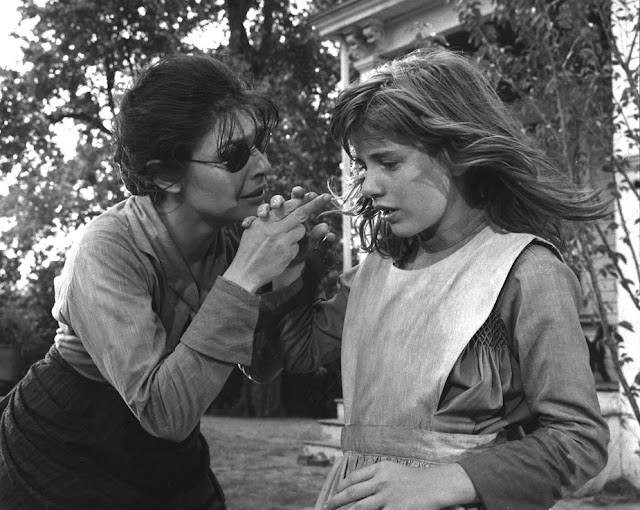
The Way West (1967) is an epic Western drama based on the Pulitzer Prize winning novel by A.B. Guthrie, Jr. This is the second story in Guthrie's trilogy. The first book, The Big Sky was adapted in 1952 and the third book These Thousand Hills was adapted in 1959. The Way West was independently financed through producer Harold Hecht's production company and distributed through United Artists. Hecht produced several acclaimed films including Marty (1955), Sweet Smell of Success (1957) and Birdman of Alcatraz (1962). He ran Norma Productions with Burt Lancaster before striking it out on his own. In the 1960s, Hecht was one of the top independent producers of his day and The Way West was his swan song. It's his last credited role as a producer. He went on to work on one more picture, Ulzana's Raid (1972), before leaving the business for good.
I didn't know much, if anything about The Way West before I watched it recently. It's become an obscurity in the long history of classic Westerns. Director Andrew V. McLaglen, who had studied under the tutelage of William Wellman and John Ford among others, was considered one of the last great director of Westerns. He had extensive experience directing this genre for both film and television. Unfortunately, The Way West was a commercial failure. It couldn't deliver based on expectations. For an epic Western with a trio of big name headliners, it should have been a guaranteed hit. I believe the film suffers from too many cooks in the kitchen. When the film was in the editing process, United Artists demanded that McLaglen cut the first 22 minutes of the film to make it shorter. McLaglen felt this hurt the picture because audiences were not properly introduced to the three main characters. I felt that the beginning was rather abrupt and there wasn't much time to learn about Tadlock, Summers and Lije. Within a couple minutes we're introduced to all three and then the story kicks into gear. There's little to no character building and this is a crucial misstep as we need to feel connected to these characters to want to follow them on their long journey.
The Way West has garnered mixed reviews and I've read quite a few scathing ones online. I don't feel like this is a bad picture. Even with the abrupt beginning, I found it to be quite an enjoyable film. And this is coming from someone who doesn't like Westerns (I make exceptions for all Mitchum Westerns.) I wish Widmark had more to do in the story but Mitchum and Douglas play to their strengths. Mitchum and Douglas worked together in Out of the Past (1947) and The Way West was their only other film working together (they appear in The List of Adrian Messenger (1962) but not in the same scenes.) Director McLaglen said about Mitchum and Douglas:
"They were poles apart in personality. Bob was an easygoing guy, and Kirk was more volatile. But there was never a feud. I felt within myself that Kirk probably wasn't one of Bob's favorite guys, but you'd never know it. Bob wasn't the kind of guy that goes spouting off with that kind of stuff."
According to Mitchum biographer Lee Server, Mitchum was offered the choice of the scout or the part of Lije. When Mitchum couldn't make a decision, the filmmakers made it for him. The scout suited him best. Server said, "Mitchum's role was a custom fit, one more lonely, stoic outsider turning his back on civilization by the fade-out." Kirk Douglas supposedly was a pain in the neck during the making of the film. He wanted to control and other cast members remember him being rude to them. But it's hard to imagine the film without him. His off-screen personality suited the on-screen character of Tadlock.
The Way West was Sally Field's film debut. It also features character actor Jack Elam as the stowaway preacher Weatherby. Mitchum's brother John Mitchum plays Little Henry and Patric Knowles plays Captain Grant. Connie Sawyer, who plays Mrs. McBee, passed away last month at the age of 105.
The film was shot on location in Eugene and Bend, Oregon with absolutely no studio work whatsoever. It feels real and the cast and crew went through their own hardships to film in the wilderness. Jack Elam said "the whole picture was one tough son of a gun."
The Way West (1967) is available on Blu-Ray and DVD from Kino Lorber. The screencaps above are from the previous DVD edition. Kino Lorber's Blu-Ray is stunning and the quality has improved significantly.
When you purchase through my buy links you help support this site. Thanks! And please make sure to visit my new Amazon shop.
Thank you to Kino Lorber for sending me a copy of the Blu-Ray for review.



















































